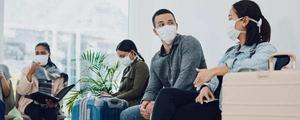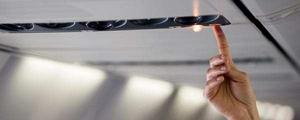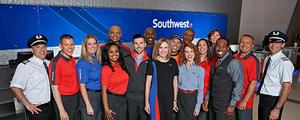Story Highlights
- Airlines and airports are suffering financially
- Potential travelers state clearly what they want
- Efforts to digitize and automate should be high on the priority list
Things were looking great for aviation between 2014 and 2019. Operating at relatively high profit margins, the industry as a whole generated about $175 billion during that time period and prospects were looking even better for 2020 ... until COVID-19 crashed the industry.
Now, airline revenue channels are paralyzed by the unprecedented drop in aviation and commercial activity. The extremely asset-intensive airport industry, always subject to high fixed costs, is rocked by the failing airlines, ground handling, car rental and other airport-related services. And, as more than 40 airlines have declared bankruptcy while many others survive on government support, it is now predicted that aviation could lose more than $76 billion by the end of this year.
It goes without saying that costs have to be cut. Many in the air-travel industry are making the first incision around the digital initiatives they implemented years ago -- a move that Gallup data suggest is a mistake.
While the economic situation is extremely difficult for both airlines and airports, this is not the time to stop investing in digitization and automation. In fact, Gallup analysis shows those strategies may be the key to bringing customers back sooner.
Invest where it matters most.
To understand why, aviation industry leaders need clarity on air travelers' concerns. A June-July 2020 Gallup study shows that 77% of Americans are "very" or "moderately concerned" about coronavirus exposure in airports, and 82% of Americans are very or moderately concerned about contagion in airplanes. And most don't think safety protocols are sufficient. Only about one-fifth "strongly agree" that following the airport's (21%) or airline's (22%) health policies will keep them safe.
However, Gallup U.S. data shows that touchless equipment -- a common element of automation strategies -- greatly allays passengers' fears. When asked "What makes you more likely to travel through the airport?" 81% said, "touchless equipment or technology used wherever possible," and 80% said the same when asked the same question about airplanes. And 82% said, "the airline uses the latest technological advancements and/or system improvements to protect travelers' health," would get them back on a plane.
The data indicate that airports and airlines need digital strategies and touchless equipment more than ever. Indeed, they may be priority investments.
However, priorities have to be rank-ordered in an industry that's down $76 billion. So, with the knowledge that customers are dubious about health protocols, the best place to allocate spending is where it has the most effect on the customer experience.
Having fewer touchpoints provides a greater sense of security.
Gallup data shows that the customer experience starts before customers leave home -- with the organization's website, text messages and emails. We recommend detailing all safety measures and reinforcing that messaging in confirmation or follow-up communication.
While the economic situation is extremely difficult for both airlines and airports, this is not the time to stop investing in digitization and automation.
Next, focus on preflight time, not necessarily because of customer comfort or organizational efficiency, but because passengers know the risk of infection is higher where people gather. The most effective tech investments fulfill all functional requirements (e.g., combine check-in and ID verification with the option for seat upgrades), are cost-effective, and are user-friendly for the customer and the operator. All processes that can be touch-free -- check-in, baggage drop-off, security check, shopping/dining, and boarding -- should be touch-free. Some of the most promising digitalization options include:
- Preflight apps that allow passengers to check in off-site and receive boarding passes and luggage tags on their smartphones.
- Security/passport check technology that reduces human contact.
- Texts that communicate wait times and flight information to thin passenger queues and crowds.
- Payment apps for restaurants and shops that diminish the number of touchpoints in customers/employee interactions.
- Touch-free machines in restrooms, elevators, vending areas, etc.
Etihad Airways, the national airline of the United Arab Emirates, is a leading example of touchless digitalization in aviation and has partnered with Elenium Automation to introduce new technology. Working with Amazon Web Services, Elenium has developed voice-recognition tech that eliminates person-to-person contact in airports and devices that monitor a passenger's temperature, heart rate and respiratory rate for potential symptoms of illness. Customers who choose to have their wellness checked will have the assistance of qualified staff if the device catches worrying symptoms, including those of COVID-19.
Reduce passengers' anxiety to get them back in the air.
Digitalization allows customers a sense of security that is most sorely lacking right now -- Gallup finds that only 8% of flyers are unconcerned about catching the coronavirus while traveling -- but it's not the only means of promoting safety. Gallup data show that highly visible cleaning activities, accessible hand sanitizer, social distancing regulations, masks and temperature checks undercut passengers' anxiety.
Etihad does those things, of course, just as many others in the air travel industry do. But Etihad's investment in new technologies is a bellwether stance that's likely to pay off even when the pandemic is over -- beyond increasing efficiency and lowering labor costs, it will conform to passengers' collective memory of COVID-19. It may be years before people feel comfortable touching things that thousands of others have touched.
However, tech is only effective if people understand how to use it. To make digitalization a weapon against COVID-19 -- and passengers' fear -- tech has to be simple and user-friendly. Communication and education are key.
Granted, the idea of funding digital investments may gall leaders who are $76 billion in the hole. And tech's promise of improved efficiency and reduced labor costs don't mean much when airports are empty. But the industry needs to reduce passengers' anxiety to get them back in the air -- and customers are clearly telling Gallup that touchless tech may be the best way to do it.
What will bring your customers back?
- We can pinpoint customer sentiment. Register for an on-demand webinar to learn about our new forecasting model.
- Download our guide to customer centricity.
- Explore our customer-centricity framework.






